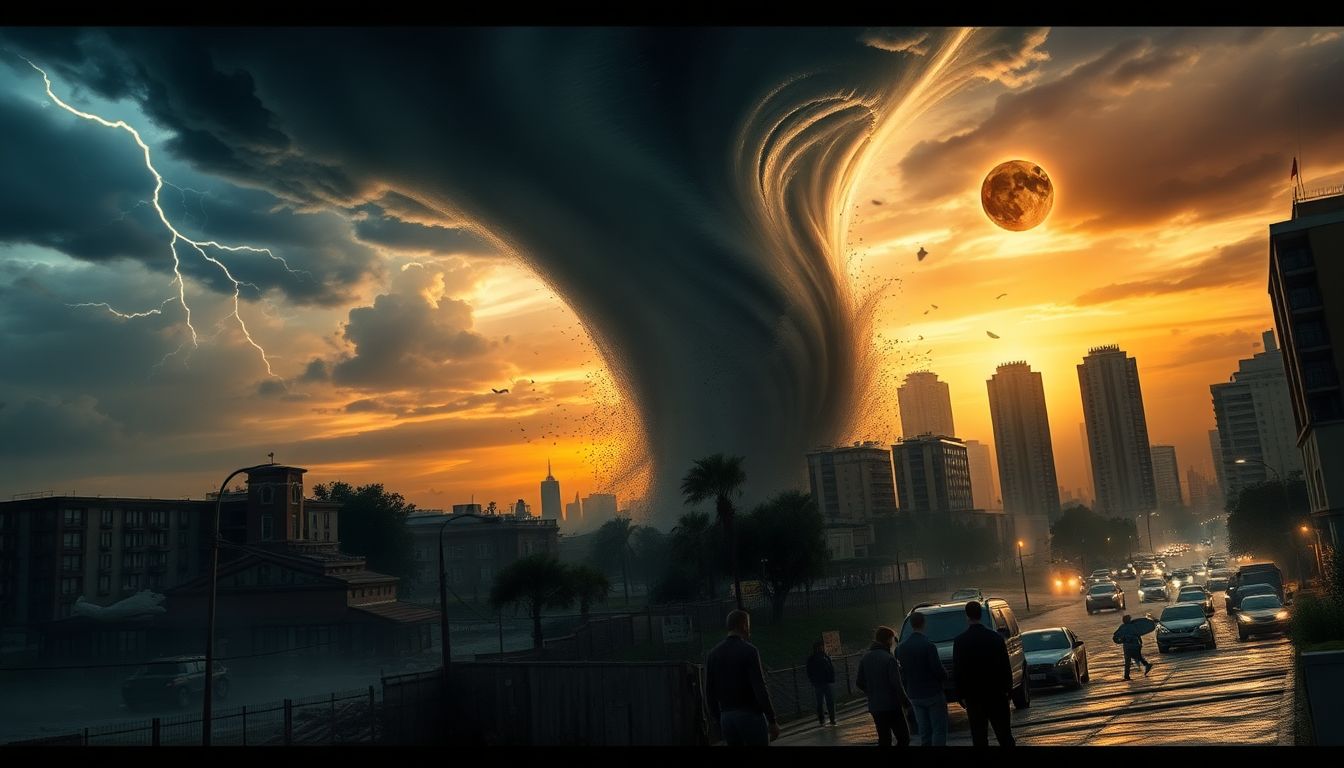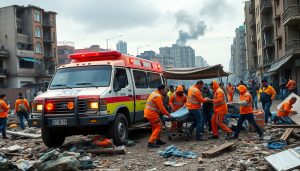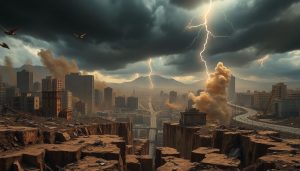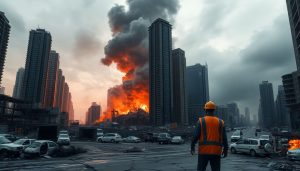Introduction
The lure of natural disasters has long tantalized filmmakers and audiences alike. By taking these films to the chaos that exists when nature’s fury puts human strength and will to the test, one watches with fascination as different characters battle floods, earthquakes, or wildfires. These horrible yet beautiful stories are a reflection of our deepest fears and aspirations. Beyond entertainment, they capture the essence of human survival done in times of absolute dire straits. This article lists some of the best films depicting these creepy yet awe-inspiring moments.
The Appeal of Natural Disaster Movies
The Thrill of Watching Humanity at Its Best
What is it, then, that affords these disaster movies such popularity? It is the rawest kind of emotion conjured by watching a character brave through the extreme tribulations? With every act of courage we sympathize with the hero—be it the slow crawl through rubble after an earthquake or paddling through a tsunami. These scenes remind us that while the situation is dire, there is always the light of hope within. “San Andreas,” “Dante’s Peak,” and so many others leave the audience heartened with the idea that humanity has a fighting chance against nature.
Reflection of Real-World Events
Some disaster scenarios are often drawn from real events. Areas in California that sustain earthquake tremors or the tsunamis that sullied Southeast Asia are often key news items. This means that the movies slightly exaggerate it to exploit drama, but they usually stay grounded on what could really happen. There is an ongoing debate among critics and disaster organizations regarding the realism of these films, with some doing a tremendous job illustrating the chaos and the reality behind disasters. They give viewers a chance to understand what an actual survival scenario might be like and what might be at stake in preparation.
Iconic Natural Disaster Movies of All Time
Older Classics that Created the Standard
Some movies created the template for disaster films. “The Towering Inferno” and “Earthquake” brought fireballs and crumbling buildings to the screen. The special effects wowed audiences, who were shocked by massive set pieces, creating danger in the minds of viewers. These latter classics have remained a reminder of epic proportions.
New Age Blockbuster Revolutionizing the Genre
The last decade has seen movies like 2012, San Andreas, and sometimes Dante’s Peak, which have remained completely ahead of the genre, touching CGI to the utmost for creating realistic explosions, floods, and storms. The stories used human guts and teamwork for bringing the seriousness of the Perils close to home. The spectacle and intensity of these new films keep audiences glued to their seats till the very end.
Critical Acclaim and Social Impact
Discussions about safety and preparedness were stimulated by many of these movies. They have associated with pop culture scenes and famous dialogue. About, such as, for instance, “2012,” which triggered concern for climate change and how flimsy this world can be in general. These empower audiences to take natural threats seriously while still delivering entertainment that lingers after the credits roll.
Top-Notch Natural Cinema-Based Disasters
Earthquakes
“San Andreas” and “Earthquake” show only a few elements of the confusion that shifting ground brings to cities, buildings, and people. These movies actually indicate that such earthquakes can trigger public preparedness, as in the case of California and Japan, hence worth-watching and engaging.
Tsunamis
Such is the case with “The Impossible” and “Dawn of the Dead” for gigantic waves crashing down on shores. These movies more often concern the thrill of the struggle for survival against overwhelming watery monsters. Heart-stopping realism, notably paired with the special effects mimicking the catastrophe force of tsunamis, is the most possible outcome in such scenes.
Tornadoes and Severe Storms
The thunder of storm fronts holds it all for “Twister” and “The Perfect Storm.” The former portrays the adventure of storm chasing in the name of science, while the latter pictures a fishing crew battling against a huge hurricane. The beauty of these films is the high-end CGI they put into making us feel every wind and rain and the disaster’s reality and severity.
Explosions And Eruption-Related Disasters
Areas burned and darkened by ash clouds are shown in “Dante’s Peak” as well as in “Volcano,” which have erupted flames. The way people reacted to such sudden explosions and flowing lava would be depicted. These explain the risk to which people are exposed living around active volcanoes and call into play the concept of better warning systems.
Floods and Rising Sea Levels
Both “The Day after Tomorrow” and “Poseidon” plunge their audience into floodwaters rising above the coast. As is the case with many disaster films, these relate to the theme of climate change and exhort their viewers to think about global warming. They often show fully submerged cities and crowds of people racing to higher ground.
Effective Disaster Movie Qualities
Realism and Scientific Accuracy
A disaster movie becomes believable from its very first frames. That is, it must represent the kind of realistic cause-effect transmission of events which seems probable to viewers. Critics laud “Twister” and “The Impossible” for keeping the science real while entertaining. The better such a movie gets the facts right, the better viewers are able to imagine what might happen in the future world.
Character Development and Human Drama
Unique spectacle goes above memory in connection with even a small number of viewers who watch it. Strong storytelling infused with an emotional component will lead to concern about where these people will end up eventually. This drama-action balance guarantees audience interest and gives investment.
Modern Disaster Movies: Special Effects and Cinematic Techniques
These trains make use of CGI and practical effects nowadays. These make a disaster so much more alive and terrifying. As time goes on, newer technologies allow filming scenes which can easily be pictured as swirling debris, massive walls of water, or fires, drawing him into the very story itself.
Messages and Themes
Disaster movies have strong messages. Themes often include climate change and its consequences, hubris, and resilience. They encourage us to prepare for disasters or change our way of living. These messages can stir audiences to action beyond mere viewership.
Helpful Hints for the Cinema Buff and Advocate for Disaster Preparedness
Choosing Disaster Movies
Find films that strike a balance between realism and entertainment. Select an actual disaster movie or one that uses computer-generated imagery with realistic effects for the sake of realism. If you would rather experience a film that makes you feel something, go for disaster movies that have characters that present compelling stories.
Using Film as a Pedagogical Medium
Disaster movies can be used to teach safety to practitioners. They vividly illustrate what must be avoided or what must be done. Teaching material and guides for using the movies will prove useful for solidifying learning.
Keeping Up with Natural Disaster Reports
Follow reliable sources and apps to keep yourself alert. Watch documentaries, listen to the weather report, and join your local community drills. When it comes to facing disaster, knowledge is your best weapon.
Conclusion
Natural disaster movies offer entertainment and education. They remind us of nature’s fury and our ability to live through tragedies. To see these films can teach us so much about preparing better and learning to respect the forces of nature. The tales we hear, of tsunamis and earthquakes, tell us that human strength and hope shine the brightest in the darkest hour. So grab the buttered popcorn and sink into a disaster movie that sparks cognizance of the common resilience that we all possess.




